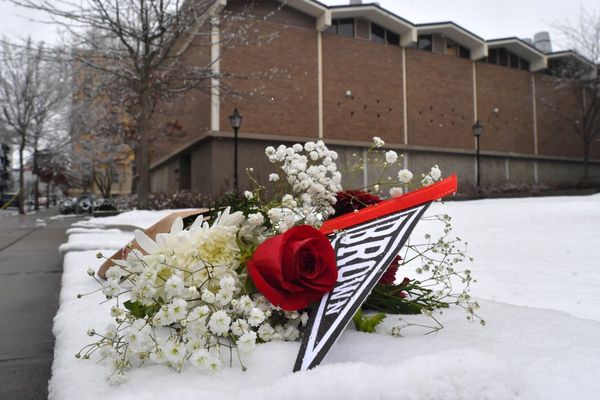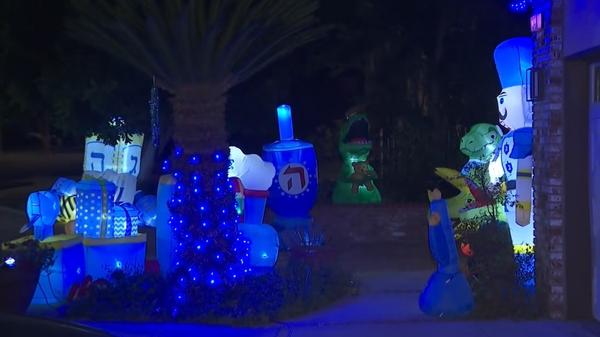
Robyn and Nick Lloyd have been foster carers for a decade, welcoming more than 30 kids into their home.
There’s a financial and emotional toll to being a carer, but also joy attached to providing a safe environment for some of society’s most vulnerable members.
Some of the foster children stay with them a few days, others for months. They cared for one little boy for two years.
The Sydney couple, who have three biological daughters, have drawn on support networks during their time as foster carers, including their local Anglican church members and an older fostering couple down the street who were fill-in grandparents for some of the younger foster kids.
Robyn also regularly meets a group of about 20 carers living in her area.
But she has noticed that the group is rarely replenished with younger members, raising concerns that the next cohort of carers has gone missing.
Australia’s living and housing costs are so extreme that younger families – mainly millennials – who would typically represent the next generation of carers have neither the time nor spare bedroom to foster.
“I’m not seeing lots of younger families come through the carers’ networks; there haven’t been many under 40,” Robyn says.
“We need carers. One of the things I love about being a foster carer is being part of the village that raises them.
“These kids just need people to support them and love them.”
Carer crunch
There were 7,980 foster carer households with a child placement as at 30 June 2024, according to the most recent Australian Institute of Health and Welfare (AIHW) data. This represents more than a 10% drop in numbers in just three years, and 20% drop over the past decade.
Traditionally, a large cohort like the millennials reaching the young family stage would represent foster care potential, according to the Association of Children’s Welfare Agencies; however, this is now unlikely.
The association’s chief executive, Simone Czech, says the number of foster carers leaving the system is high, while the number of inquiries to become carers is decreasing.
“The nature of children needing care is that it’s not necessarily a role whereby you can work nine to five,” says Czech.
“In an ideal world, foster kids should have their own bedroom so that they’ve got their own space. That’s not necessarily a requirement, but it’s just that question of how much space, and time, does a household have to take on a foster child?”
Australia is not the only country facing a shortage of carers, with the UK among nations also recording a shortfall between retiring and new applicants.
There are extreme shortages of carers for large sibling groups, teens and children with complex needs.
But Australia’s intense housing problem, whereby Sydney, Adelaide, Melbourne and Brisbane are all in the top ten least affordable global cities, creates a particular challenge to policymakers.
Last year, almost 73% of Australia’s 2.2 million couple families with young children had two employed parents, according to Australian Bureau of Statistics data. A decade ago, it was 61%.
While some of that change is linked to household choices about workforce participation, much of the extra work is born from financial necessity.
Many industry participants say the solution to the foster care crunch is twofold. First, state governments need to invest more in early intervention, kinship and home-based care models to take the pressure off the foster system. And governments need to provide more support to slow down, or reverse, the decline in carer numbers.
“We need to stem the flow of kids needing out-of-home care, but there will always be a need for carers,” says Czech.
“Carers are worth their weight in gold, and we need more of them.”
Spare room
A lack of foster carers has resulted in many kids being placed in emergency accommodation, such as hotels, motels and serviced apartments, where they are looked after by a rotating roster of workers.
This is bad for the children, and is hideously expensive for taxpayers, with costs as high as $2m a year for each child.
The NSW government recently banned so-called alternative care arrangements, although their use persists in other states. The NSW government also recently announced a 20% lift in the foster care allowance as it tries to arrest a slide in carer numbers.
The new rate means the carer of a typical five-year-old child receives a tax-free allowance of just over $787 per fortnight, according to the state government, which is the highest rate in the country.
Barnardos Australia chief executive Deirdre Cheers says the burden of living costs is hard to shift, even with the increased allowance. “It’s a really good thing, and New South Wales is leading the way there,” says Cheers.
“But the reality is that many people don’t have room in their house, or they need to work one, or even two jobs to keep their own family afloat.
“We need people who are not just providing a bed, but who can be actively involved.”
Victoria’s allowance rates are among the lowest in the country, and it’s no coincidence that the state is losing carers at a rapid rate. In 2023-24, 429 carer households left the Victorian system, and just 162 joined, according to AIHW data.
Rowan Pulford, a policy adviser at the Foster Care Association of Victoria, says the cost of not investing in foster care is enormous.
“You either invest in foster carers or you spend the money elsewhere,” says Pulford, who is also a carer.
“Emergency placements and residential care are not only hugely expensive, but also incredibly damaging to the child.
“The life trajectory of those children can also be really poor.”
Foster circle
While raising allowances will help keep some carers in the system and encourage some prospective carers to join, there’s no easy fix.
Many organisations are looking to retiring baby boomers as part of the answer, given they are the largest group with spare bedrooms. As a cohort, they have a high rate of home ownership, and many own their properties outright.
That could be part of the solution; however, even retirees with robust bank balances are being affected by cost-of-living pressures, given many are now caring for their grandchildren as their own children grapple with intensifying work commitments.
In Sydney, Anglicare has kept its number of carers stable, even as the wider sector sheds numbers.
The chief executive of Anglicare Sydney, Simon Miller, says foster carers need support to stay in the system, especially in an era of cost-of-living pressures. The organisation has adopted a model tested overseas called the “foster circle” whereby a carer’s local community, which usually includes the local church, steps in to help the carer household.
This can include cooking meals, babysitting and financial assistance, along with care for the household’s biological children.
“This model has been hugely successful in reducing the turnover of carers and helps carers actually stick out when times are tough,” says Miller, referring to its success in the US and UK.
“We do think that it would be a really good thing if this type of initiative was adopted by the wider sector.
“As the saying goes, it takes a village to raise a child. We think it really does take a village to care for a foster child.”







